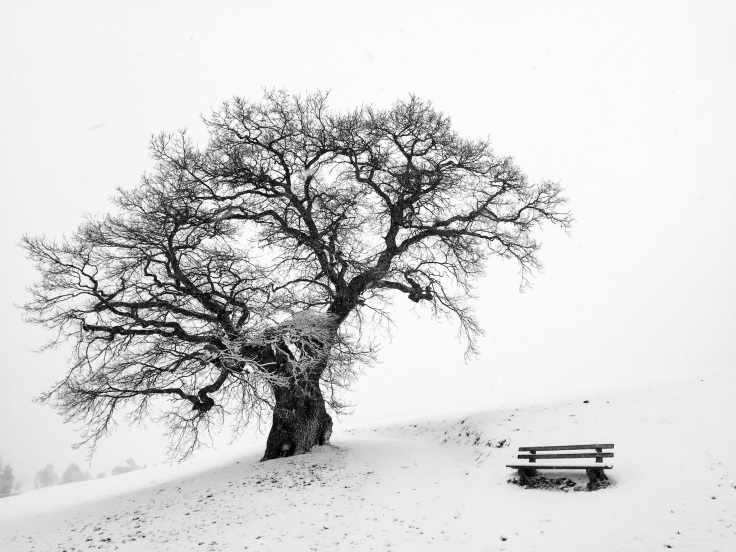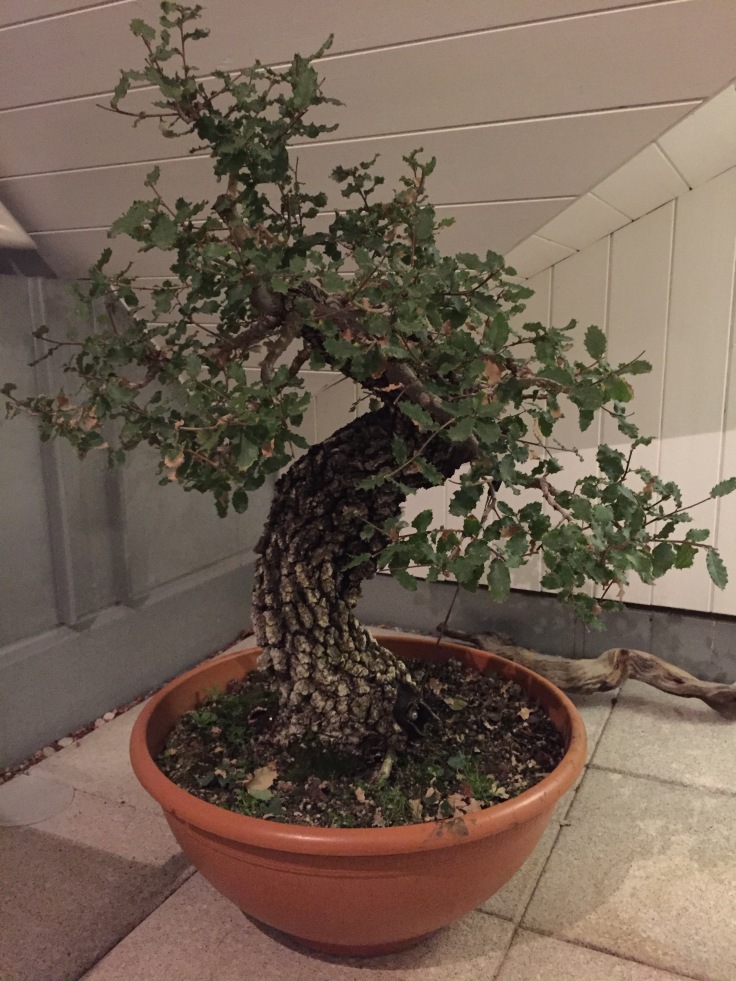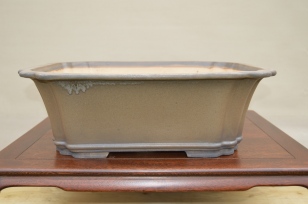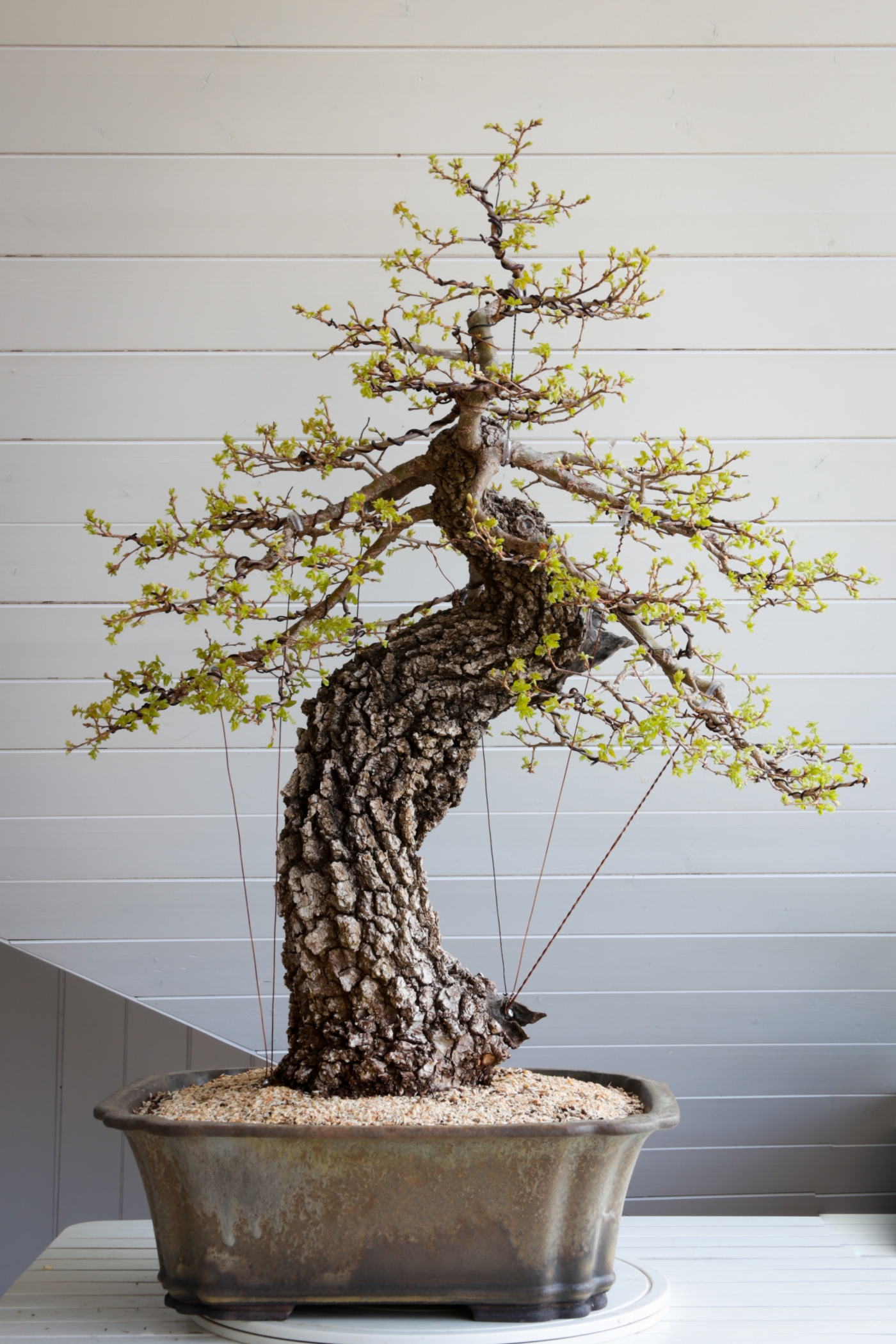I have been always captivated by old oak trees; their craggy bark and their winter silhouette are aspects that I find so special in this species. This together with the fact that my second surname “Robles” means oak in Spanish make this one of my favorite tree species.
I wrote a previous post were I show a picture of a 850 year old splendid oak. I think by looking at this picture you will now why this tree species captivate me so much.

- 850 year old oak by the town of Waldau in the Black Forest, Germany
After acquiring my first couple of bonsais, mostly pines, and after seeing a very famous oak bonsai from the Alcobendas Bonsai Museum of Madrid Collection, the wish to have an oak in my collection grew bigger.
In 2015 I started looking for a good quality specimen but it wasn´t until I went to the Noelanders Trophy in Belgium in 2016 when I found something that really attracted my attention. At this event I met a now very good friend from Spain, Germán who owns a Bonsai nursery in Spain called “Yamadori Spirit”. He offered me an amazing looking oak (Quercus Faginea or Quejigo in Spanish). I didn’t hesitated for a second and exchanged it for an old Bunjin Larix that I took with me to the event and some euros. According to Germán, this oak was collected on the high mountains of Spain and had been planted in its training pot for about four years, he estimated the oak´s age to be well over 100 years old.

- Tree as aquired
Many other oak species are well suitable for bonsai cultivation such as Quercus Robur, Pyrenaica but the Quercus Faginea is the better of them since it has smaller leaves and beautiful craggy bark in old specimens.
The tree that I acquired showed its characteristically small leaves, a great trunk movement and an exceptional old bark, nevertheless it has some flows that I need to live with and will try to work on: The nebari is inexistent and although the trunk base is quite wide, it has an inverse taper at the very base. Some branches have some ugly wound marks from previous styling but they will disappear in two or three years.
First intervention – Winter 2016
The first work that I did on the tree was at the end of February 2016. I pruned the long branches from the previous growth and cut all the old and dry leaves that were still hanging. Before the buds started to open I wired the tree almost completely and guy wired the apex to bring it upwards since it was leaning way to forward. Being new to this species, I now realize that completely wiring an oak is pretty much a waste of time and resources since the branches thicken so fast that the wire needs to be removed pretty soon after wiring otherwise it will leave ugly marks on the bark.
I then placed the tree in a covered place to protect it from the last cold winter days. Once the weather began to warm up, I placed the oak on a sunny spot and waited for spring to come.
It was until the beginning of April 2016 that I saw the first buds to open. The tender reddish leafs uncurled and the branches extended. I was impressed on how quick the branches thickened.
A good dose Bio-Gold fertilizer was applied and in order to increase the ramification, I followed the “Hedge Pruning Method” of Walter Pall which you can find in this link.
The pictures below were taken in April 2016 and show the growth of very small mushrooms at the base of the trunk. This, on one side shows the healthy micro environment of the soil and tree but on the other side the warm and conditions that we had during the spring and summer of 2016 in Freiburg. These conditions promoted the development of a fungal infection. I removed the affected leaves and sprayed the three with fungicide to stop the development of the fungus.
Tree Development during 2016
Fall – Winter 2016
A characteristic of the Quercus Faginea is that this is a deciduous tree that keeps its dry leaves until they detach with the new growth in spring. Since some of the leaves were previously infected with fungus, I defoliated the entire tree at the end of December 2016 in order to reduce the of a future infection on the new growth.
This defoliation work was very tedious and time consuming since every leaf had to be cut very carefully one by one in order not to damage the new buds. Nevertheless by defoliating the tree I could see how the ramification developed during the previous growing season and how the “Hedge Pruning Method” had worked. I cut the unnecessary branches and the dried stubs. A very satisfying overall winter image of the tree was the result of this work.
Based on the previous experience that some branches got bit off from the wire almost as soon as the new buds started to grow, I just guy wired most of the branches to bring them down and wired only the necessary young branches in order to avoid wire marks in the coming growing season.
As a winter preventive treatment for fungus and other diseases I applied a wash of 1:10 Lime Sulphur at the end of December 2016.
Pot choice:
At the Noelanders Trophy event of 2016 I met the amazing English potter John Pitt. I could see firsthand his beautiful pots and textures that he can achieve. We discussed about a suitable pot for this oak and with some of his considerations in mind and after studying the tree, I commissioned the pot to John. It had to be a grey, rectangular and masculine pot with some texture that could complement the old craggy bark and powerful trunk.

After a couple of months John sent me a picture of the pre-finished pot. The shape and dimensions were spot on but I still wasn´t satisfied with its glaze color and texture. John did an excellent job in understanding what I wanted and re-fired the pot to what is now the final product. I could not be more happy with the end result!
Repotting:
The condition of the old soil was good and the roots were growing very well. I found plenty of large spiraling roots which I carefully untangled so they grow in a better position in their new pot.
Since I read that oaks are very sensible to repotting, I did not prune much of the root length and just cut a couple of thick roots that prevented a good position of the tree in the pot.
As per the soil I used was akadama, pomice and lava in equal proportions. I also added some of bamboo charcoal to the mix . Charcoal, according to the experience of Jere Harnan from “Yamadori Passion” helps to the development of the root system by filtering and absorbing impurities that could be toxic to roots and also regulates the required pH of the tree.
These are some pictures of the tree with the new leaf growth after one week of repotting which show that the tree tolerated positively its repotting.
I am very satisfied with this result and I think that the new tree-pot combination works very well. The work to come in the following two to three years is to increase the length of the lower left branch to add some counterweight, increase branch refinement and deadwood detailing. This year I will work on the deadwood during a workshop with Francois Jeker, a master of working and creating natural looking deadwood.
I will perhaps reduce the lenght of the apex but for now I will leave it like it is.
Hopefully this tree can be shown sometime at an exhibition.
Update (Winter 2018): Click here to see the video after two years of development.






























April 9, 2017 at 9:28 pm
Reblogged this on Wolf's Birding and Bonsai Blog.
LikeLike